Ava Yi-Ping Zhou is a young New York based menswear designer. She’s a Parsons graduate with experience at renowned menswear designer Thome Brown as well as Cheng Peng. We spoke to her about her current collection, Melancholy Fantasies. Her garments are a conversation about the sensuality within the masculine as well as an exploration of detail within menswear. Her collections carry an element of whimsical painted against a stark background, as if finding joy in sombre moments.
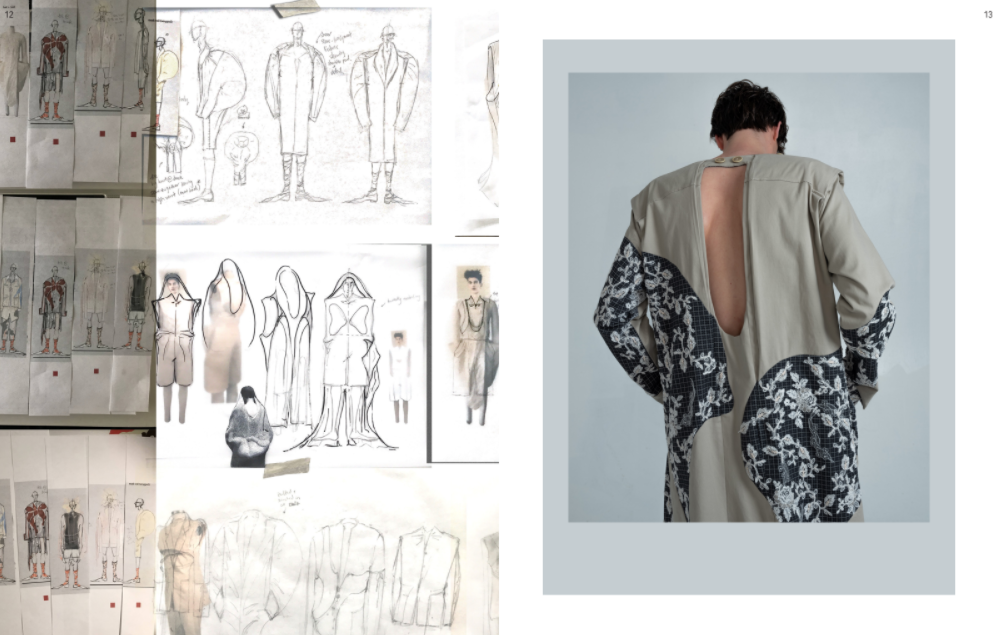
Tell us a bit about yourself and how you came to be a fashion designer.
I grew up in creative surroundings, and so, unconsciously, I knew that I wanted to do something in art and design. I loved the idea of having the freedom to have my thoughts in visual forms, and in very unusual ways. As a kid, I’ve always had a more sensitive opinion on fashion and colors, so I took it with me and decided to use it as a main outlet for me to express my creativity and thoughts.
What initially drew you to menswear?
For the longest time, I thought I would become a womenswear designer. I loved menswear details and silhouettes, but I have always wanted to design for women and imagined my designs on a female body form. Men’s fashion became very popular and “mainstream” in the last decades as streetwear and luxury fashion merged. I didn’t like it at first, but I thought I could contribute to this growing industry in a different way.
Bringing in costume, luxe, and some fun. I really like creating contrast and shock and drama with my work, and I realized I was able to achieve that better with my menswear works. I was drawn to the odd beauty the same cloth can look on a male body. This concept of beauty, anatomy, and romance is still very relevant in my work, and will always be an important part of my design process.
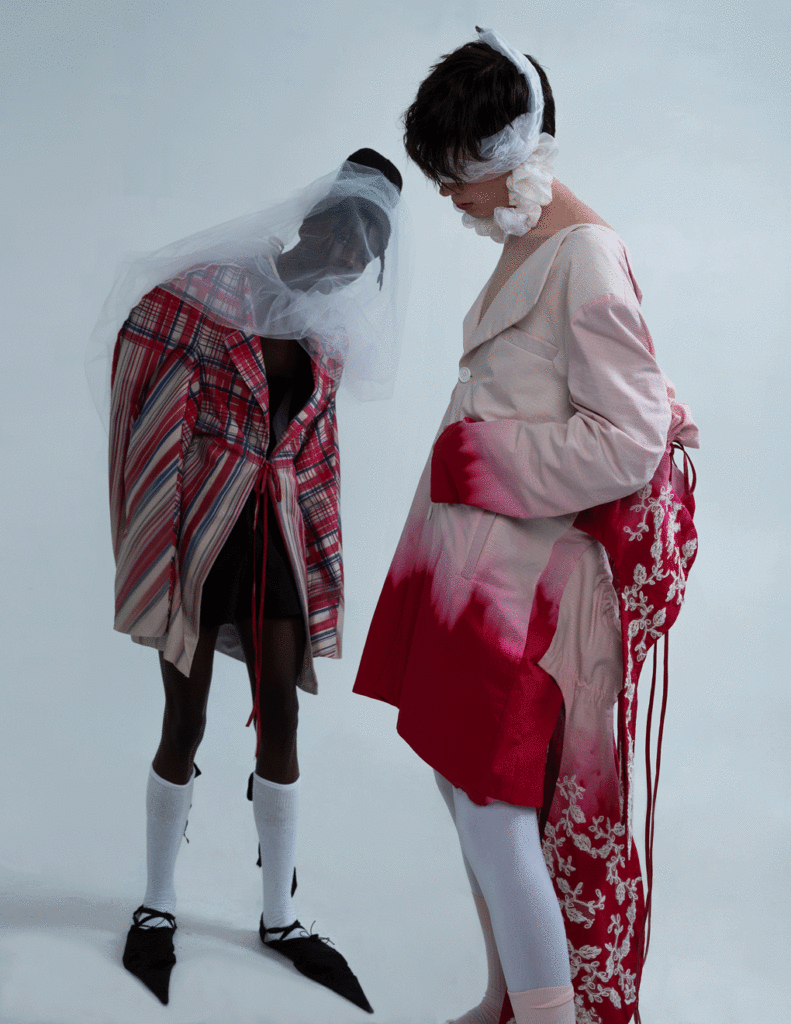
Your latest collection, Melancholy Fantasies, plays with a juxtaposition between masculine silhouettes and feminine details. What inspired you to take such a whimsical approach to menswear?
The project started off from a very personal perspective. I extracted parts of my childhood experiences that are intimate and very special to me and transformed them into prints and colors. It can be viewed as clashes of emotions, clips of memory flashes, and pieces of my identity and style. There’s a hint of humor, at the same time, sad and romantic. The juxtaposition in details is a result of these feelings merged. The collection is an escape in every form it could possibly achieve.

A really stand-out aspect of this collection is the elongated pointed shoe, what in particular drew you to this shape?
The shoes bring out the best elements of the looks when worn with the garments. I wanted them to be an extension of the garments as if they were merging into the ground. They are pieces of accessories for the wearer to hug and own the surroundings and feel the space they are in.
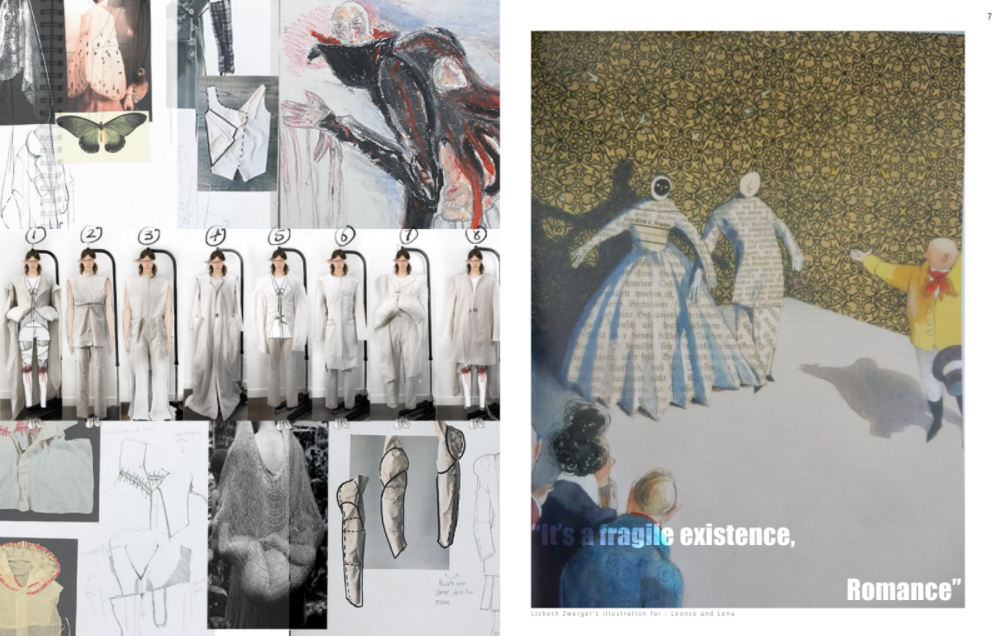
In the past you mention how poetry plays a role in your work, tell me more about that. How does interact with your practice?
I like to approach things and ideas with an abstract view. I see the process of my research as poetry, which gives myself a platform for broader interpretations and more freedom to tangent off into something unexpected. From the research stage and on for every project I do, poetry, performances, history, and art has substantially contributed to the whole package. Ultimately, poetry may just be a part of something so much grander, but it will never be missing from the storyboard.
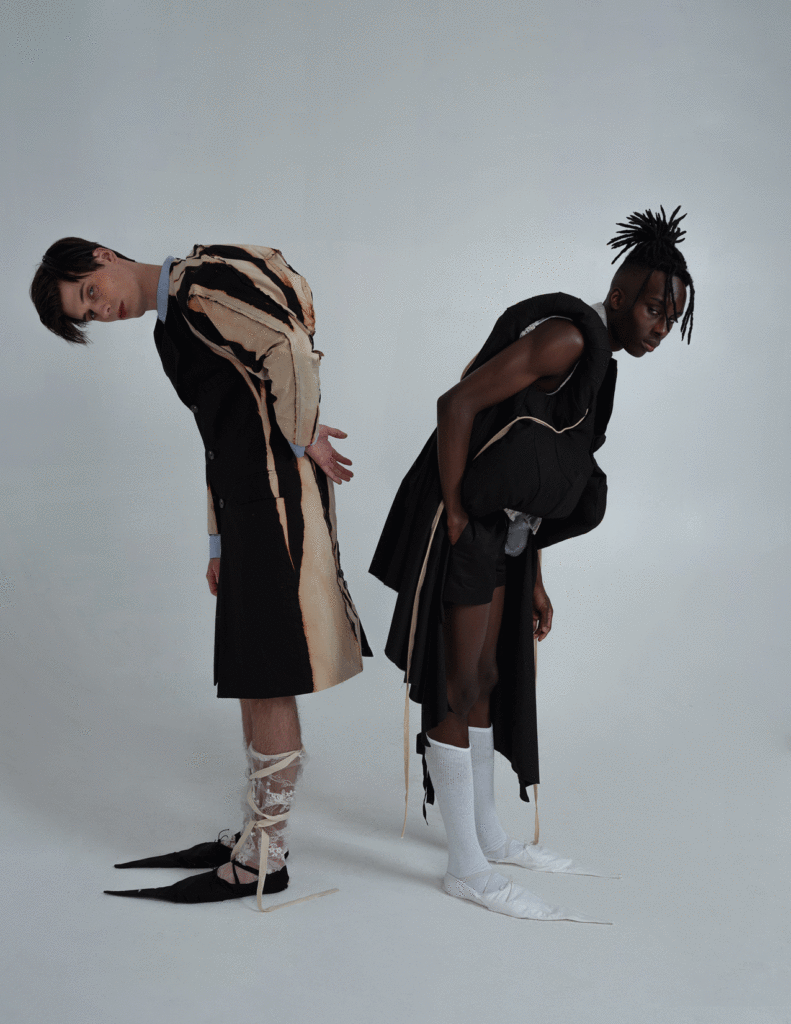
How has COVID and the pandemic affected your work and the way you operate in your practice? Has it changed your approach to fashion?
It definitely changed my thought process and what I choose to design. COVID has changed what people want to wear, how they decide what to buy, and what they value in clothes. I find myself more aware of consumer needs. I am paying more attention to design details, devoting more to the value and quality of things. I want my design to look into the now and the future of fashion. Even with the exaggerated silhouettes that may not be an “iconic” piece, I aim to create fashion that will last in quality and appreciation.
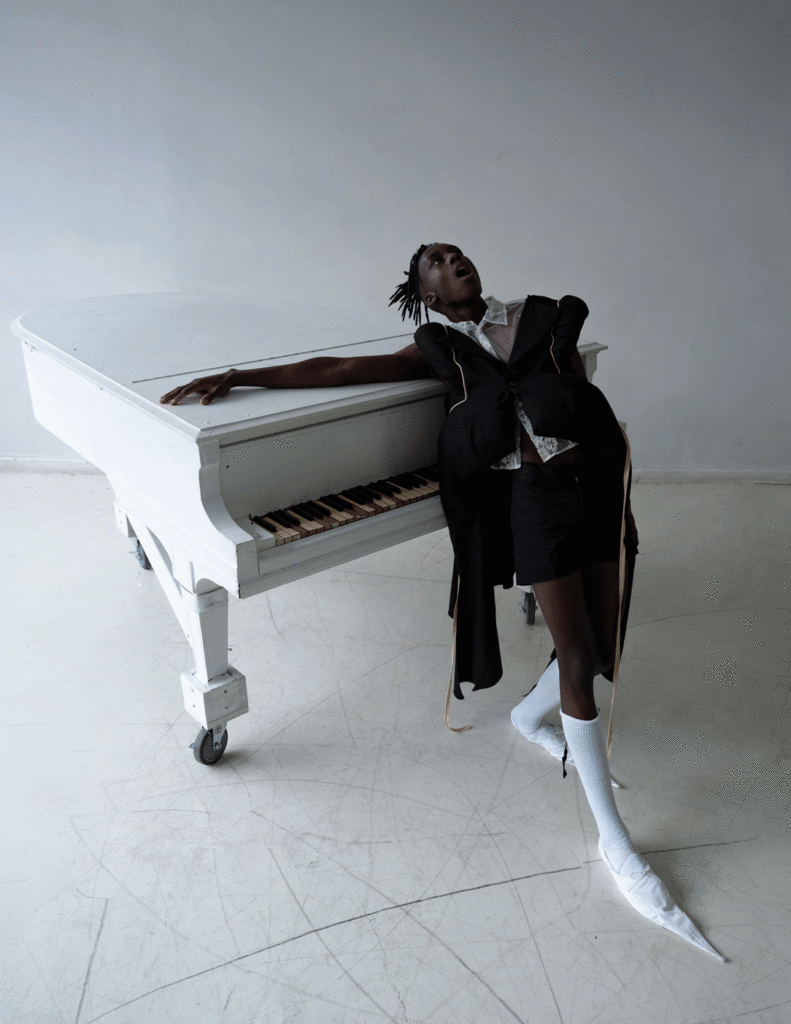
Where do you see yourself in the current landscape of the global fashion industry? Tell me more about where you see yourself as a brand and where you’d like to take your garments.
My brand and the garments speak to the idea of independence and attitude. Emotions and mood are always created in one way or another as the garments interact with people. I want to make sure that these qualities will always be visible through my designs alongside with newness in technique and ideas. I am still learning and trying to find a balance to create a larger customer base, it’s also important to me that whatever I project to the world stays relevant to me and the core of my creative values.
To see more of her work visit her website or her Instagram @avayipingzhou.



